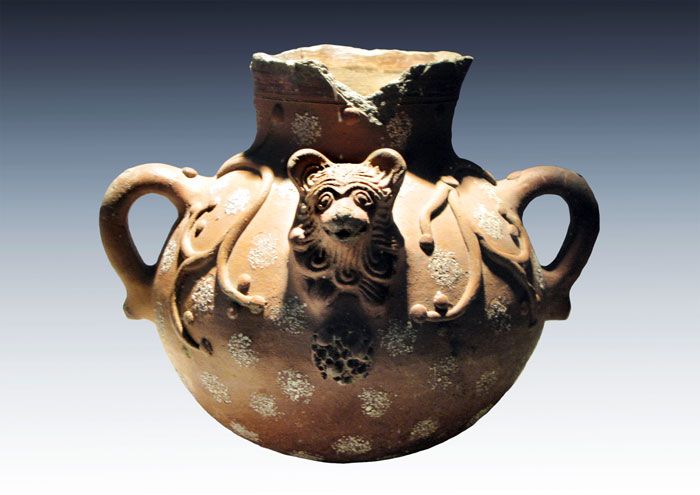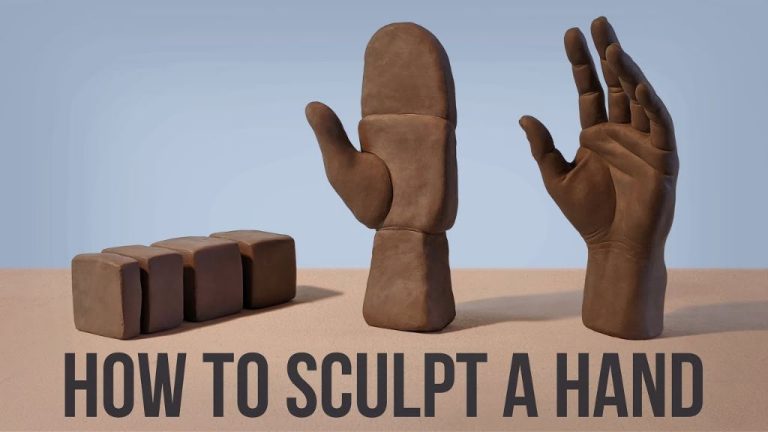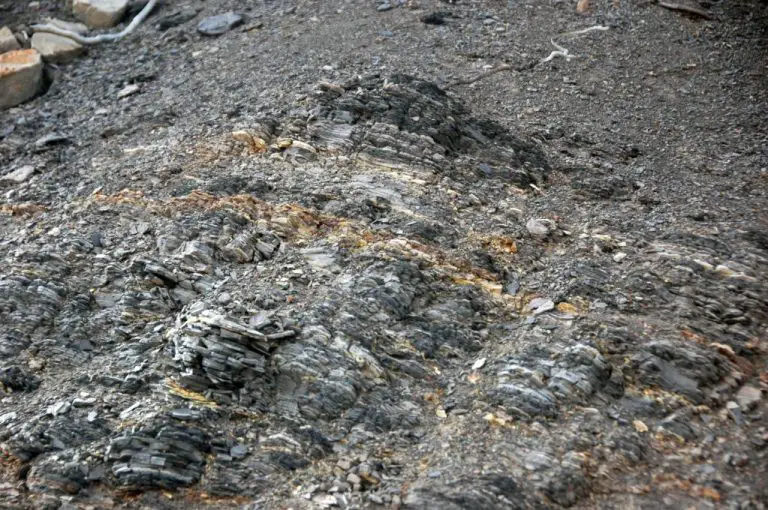What Did The Aztecs Use Clay For?
Introduction
The Aztecs were an advanced civilization that dominated large parts of Mesoamerica from the 14th to the 16th centuries. They were prolific users of clay for both utilitarian and ceremonial purposes. Clay was locally available and easy to work with, making it an ideal material for the Aztecs. Their sophisticated clay artefacts reflect the Aztec’s technical skills, appreciation of artistry and deep spiritual beliefs surrounding clay.
Aztec potters crafted objects from simple household goods to ornate sculptures. Clay was used in architecture, such as in the construction of temples, pyramids and aqueducts. The versatile nature of clay allowed the Aztecs to incorporate it into their daily lives, rituals, trade and artistic expression.
Utilitarian Household Objects
The Aztecs used clay extensively for creating utilitarian household objects like pots, plates, griddles, and braziers. Clay was readily available throughout the Aztec Empire and was an ideal material for crafting everyday items due to its durability, moldability, and ability to withstand heat.
Clay pots were ubiquitous in Aztec homes and came in a variety of shapes and sizes depending on their intended use. Large pots and jars were used for storing water, grains, and other foodstuffs. Smaller pots and bowls were used for cooking and serving food. Clay griddles, called comals, were essential for cooking corn tortillas and toasting peppers, tomatoes, and other ingredients (1,2).
Aztec plates, bowls, and cups were also commonly made of clay. These were basic utilitarian items for individual use at meals. Decorated ceramic plates and bowls were reserved for noble families (2).
Clay braziers were vital to Aztec households. These portable fire pits held hot coals for heating, cooking, and illumination. Braziers allowed the Aztecs to avoid building indoor fires that produced unhealthy smoke in their homes (1).
The durability and thermal properties of clay made it an indispensable material for crafting essential household goods in the Aztec world.
(1) https://www.etsy.com/market/aztec_clay_pots
(2) https://postfurnishings.com/products/metal-hanging-pots-art
Decorative Household Objects
The Aztecs used clay to create decorative objects for their homes and personal use. Some of the most common decorative household items made from clay were figurines, musical instruments like ocarinas and whistles, and toys for children.
Figurines depicting gods, animals, and human forms were very prevalent. These served both decorative and religious purposes in Aztec homes. Figurines representing deities like Quetzalcoatl, Tlaloc, and Xochipilli were common, made in various shapes and styles (Source). Animal figurines like jaguars, eagles, and monkeys were also fashioned out of clay. Anthropomorphic figurines depicting Aztec daily life activities, occupations, rituals, and traditions were also created.
Clay ocarinas, whistles, rattles, and other musical instruments were produced, often in zoomorphic shapes like birds or jaguars. These instruments, besides producing music, also held symbolic meaning about nature and religion for the Aztecs (Source).
Clay was used to make toys for Aztec children, including rattles, miniature cooking pots, animal figures, and human dolls. These toys allowed children to simulate adult activities and gave them entertainment.
Architectural Elements
The Aztecs masterfully utilized clay for architectural elements like bricks, pipes, and sculptures to build their grand cities and temples. Bricks made of clay were a foundational building material, allowing the Aztecs to construct sturdy structures. Intricate clay pipes delivered water throughout the city in an advanced plumbing system. Imposing clay sculptures adorned buildings, bringing them to life with artistic embellishments. The Aztecs baked clay into hard, durable forms that withstand the test of time, as evidenced by archaeological remains today. These architectural elements in clay demonstrate the Aztec’s sophisticated engineering abilities and artistic sensibilities.
Sculptures and Effigies
The Aztecs created intricate sculptures and effigies using clay for a variety of purposes. Some of the most common were religious idols, death masks, and busts of rulers.
Clay was considered an ideal material for crafting sculptures and effigies of the gods because of its malleability and availability. Skilled Aztec artisans would mold figures of important deities like Huitzilopochtli, Tlaloc, and Quetzalcoatl to be used in ceremonies and adorn temples (Source). These religious idols were colorful and elaborate, often decorated with paints, feathers, and semiprecious stones.
Funerary masks and busts made of clay were common for deceased Aztec nobles and rulers. The death masks were placed directly on the face of the dead before burial. Busts depicting the likeness of the departed were also buried within their tombs. These sculptures served to honor and memorialize the dead (Source).
Clay allowed Aztec artisans great freedom to craft detailed and expressive sculptures. The Aztecs’ mastery of working with clay left an incredible artistic legacy still admired today.
Jewelry
The Aztecs were highly skilled in creating jewelry and ornaments from clay, especially beads, pendants and ear ornaments. Clay was an ideal material for jewelry because it was plentiful, easy to work with, and could be fired to become durable and lightweight. According to the tutorial at Aztec Clay Pendant – Easy Clay Jewelry, Aztec-style jewelry was extremely popular. The step-by-step instructions show how easy it was for Aztec artisans to make pendants from clay using simple hand tools and techniques like rolling, cutting, sculpting and glazing.
Clay beads were also prevalent in Aztec jewelry. Small clay beads could be quickly mass-produced by slicing long coils of clay and then shaping and polishing them. Larger, more ornate beads were hand sculpted into symbolic shapes depicting gods, animals, plants, etc. According to Aztec Clay Pendant – Easy Clay Jewelry Tutorial, clay was an ideal material for jewelry because the fired pieces were lightweight and durable compared to stone, yet could also incorporate elaborate decorative details.
Pottery Production
The Aztecs crafted utilitarian, decorative, and ritual pottery using only hand techniques, as there is no evidence they employed the potter’s wheel. Based on archaeological findings, the major pottery production steps were:1

– Locating clay sources. The Aztecs used locally available clay, such as from lakebeds.
– Processing the clay by wedging and kneading to remove air bubbles and create an even consistency.
– Forming pottery vessels by hand, using techniques like coiling, pinching, and scraping.
– Decorating with slips, paints, and engraved or pressed designs prior to firing.
– Firing vessels in open bonfires, kilns, or oxidizing them in closed vessels with burning coals or dung.
– Producing different pottery types like plainware, burnished redware, polychromes with multi-colored slips or paints, and incensarios for burning copal incense.
Skilled potters created thin-walled serving wares, while thicker utilitarian vessels were mass produced. The highly prized polychromes required multiple firings and were labor intensive to create intricate designs.
Religious Ritual Use
The Aztecs used clay to create vessels and effigies for religious rituals and ceremonies. Elaborate pottery was made specifically for use in offerings and sacrifices to the gods. These ritual vessels were beautifully painted and intricately detailed to please and honor the gods.
Censers, incense burners, braziers, and chalices were common types of ceremonial vessels used to present offerings. The Aztecs burned incense, herbs, spices, and even blood in these containers during rituals. Some vessels depicted gods or religious symbols to reinforce their sacred purpose.
Clay was also used to craft realistic effigies that were made in the image of gods and humans. During certain festivals and ceremonies, these effigies would be ritually killed or destroyed to represent sacrifice and honor the gods. Figurines and statues of deities were common effigies destroyed in this way.
Overall, clay allowed the Aztecs to create sacred objects and figural representations used specifically for religious worship, offerings, and sacrifice. The breakability of clay allowed for dramatic, symbolic acts of destruction and offering. This imbued otherwise mundane materials with sacred, spiritual meaning in Aztec religion.
Trade and Barter
Clay objects were a major trade commodity for the Aztecs. The Aztec economy was based on barter, and clay pots, figurines, beads, and other objects were frequently traded at local markets and fairs. They were also an important export, traded with other Mesoamerican cultures near and far.
Utilitarian clay pots and dishes were always in demand and traded extensively, as they were essential household goods. Colorful clay beads, whistles, and figurines were popular trade items as well, both locally and with outside cultures. The Aztecs produced vast quantities of beads, wig curlers, bells, and more for trade.
Highly skilled artisans produced elaborate pottery and sculptures for the elite. These luxury clay objects were traded among nobles and kings as gifts and royal offerings. The fine details and artistry increased their trade value. Clay was also traded as a raw material when it was scarce in certain areas.
Clay objects excavated from archaeological sites show evidence of extensive trade networks. Chemical analysis reveals clay from production sites far outside the local area. This demonstrates that clay goods were widely traded across Mesoamerica.
Legacy and Significance
Claywork was an integral part of Aztec culture and daily life. The Aztecs were highly skilled in working with clay and produced utilitarian as well as ceremonial objects that reflected their cultural beliefs and values. While relatively little Aztec pottery survives today, archeological discoveries provide insight into the richness and diversity of Aztec ceramics.
Aztec pottery and clay figurines reveal the symbolic and spiritual significance of clay in Aztec rituals and religion. Effigies of deities and ceremonial objects used in offerings and sacrifices demonstrate how clay allowed artisans to give material form to concepts and beliefs. Clay vessels depicting spiritual imagery and scenes were vital for rituals honoring the gods.
The Aztecs also produced miniature clay sculptures as grave goods to accompany the deceased into the afterlife. These funerary objects, such as statues of gods or small-scale household items, illustrate the Aztecs’ spiritual beliefs about death and the transition into the next world.
Beyond its religious function, Aztec pottery also provides insight into daily life, trade, and culture. Stylistic influences and innovative techniques reflect extensive trading networks and cross-cultural connections with other Mesoamerican civilizations. The ubiquity of utilitarian vessels for cooking, storage, and transport speaks to the importance of clay in quotidian Aztec life.
While conquest and colonization destroyed much Aztec material culture, remnants of their iconic claywork help modern scholars reconstruct and preserve understanding of this rich civilization. The legacy of Aztec ceramics continues to inspire modern artists, illustrating the lasting cultural impact of Aztec claywork.



